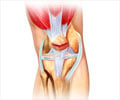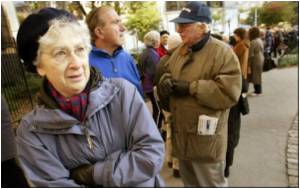A new study was carried out on comparing the bone structure in Chinese-American women and Caucasian women.

The team used a groundbreaking analytical technique developed at Columbia Engineering Individual Trabeculae Segmentation (ITS) - to analyze the microstructure and strength of the trabecular, or spongy bone, one of the two types of tissue that form bone (the other is cortical, or compact bone). Trabecular bone is the most important site of osteoporosis-related fractures. Critical to the research was the use of ITS, an advanced 3-D imaging analysis technique that was conceived and developed in Dr. Guo's Bone Bioengineering Laboratory, and has a unique ability - using high-resolution computed tomography images to quantify the plate and rod microstructure crucial to bone strength and osteoporotic fracture of bone.
The Columbia group is the first to apply ITS to clinical studies; this is the first time they have applied ITS to ethnic studies of bone health. A total of 95 women were included in the study = 49 Caucasian and 46 Chinese-American. There were no significant age differences between the two groups (36 - 7 vs. 35 - 4).
"We found in this research that Chinese-American women do not have the same risk of fracture as Caucasian women due to the plate-like structure of their bone, which offers mechanical advantages over the rod-like structure found in the bones of Caucasian women," Dr. Guo explained. "If you look at a building made of walls, you can see that it is much stronger than a building made only of columns. Columbia Engineering's ITS is the only established technique that can distinguish plate vs. rod and it clearly revealed in this study the striking magnitude of the differences between the bone structure of the Chinese-American and Caucasian women."
Drs. Bilezikian and Marcella Walker led the clinical aspect of the study and quantified the microstructures in the distal radius and the tibia. "These are the two areas that the instrument can measure," Dr. Bilezikian said. "But we believe the data that come from these sites can be applied to other sites such as the hip."
Dr. Liu, who earned her PhD on ITS development in Dr. Guo's Bone Bioengineering Laboratory, noted that the most important factor when determining bone strength is the ratio of plate to rod in trabecular bone. "We found the plate to rod ratio of trabecular bone in Chinese-American women was twice that of Caucasian women (0.62 vs. 0.30). We also found the number of trabecular plates was significantly higher in Chinese-American women when compared to Caucasian women, indicating that Chinese-American women have much stronger trabecular bone than Caucasian women." Liu is currently an associate research scientist with Dr. Bilezikian in Columbia University Medical Center's Endocrinology Division.
Advertisement
"The advanced ITS morphological analysis developed at Columbia Engineering showcases a paradigm-shift technology in measuring bone micro-architecture," said Dr. Guo. "ITS is a must-have technology for both basic science and clinical studies of osteoporosis and we are very excited about continuing our research."
Advertisement
Source-Eurekalert










